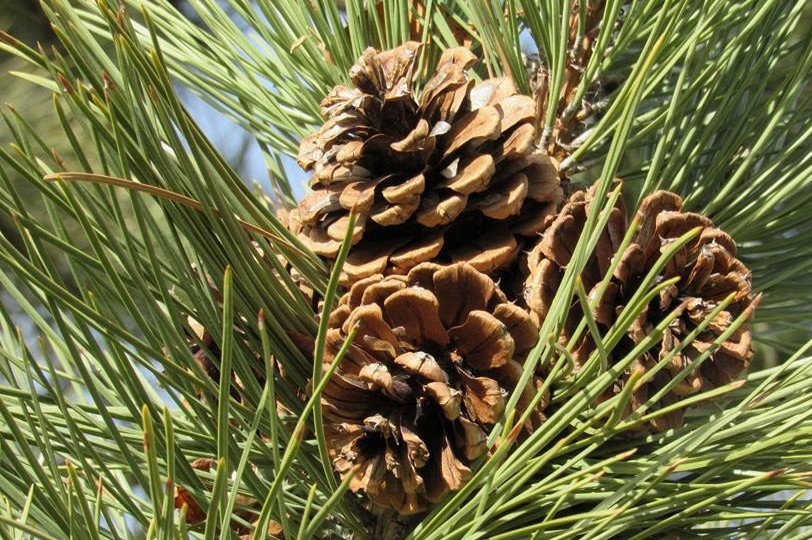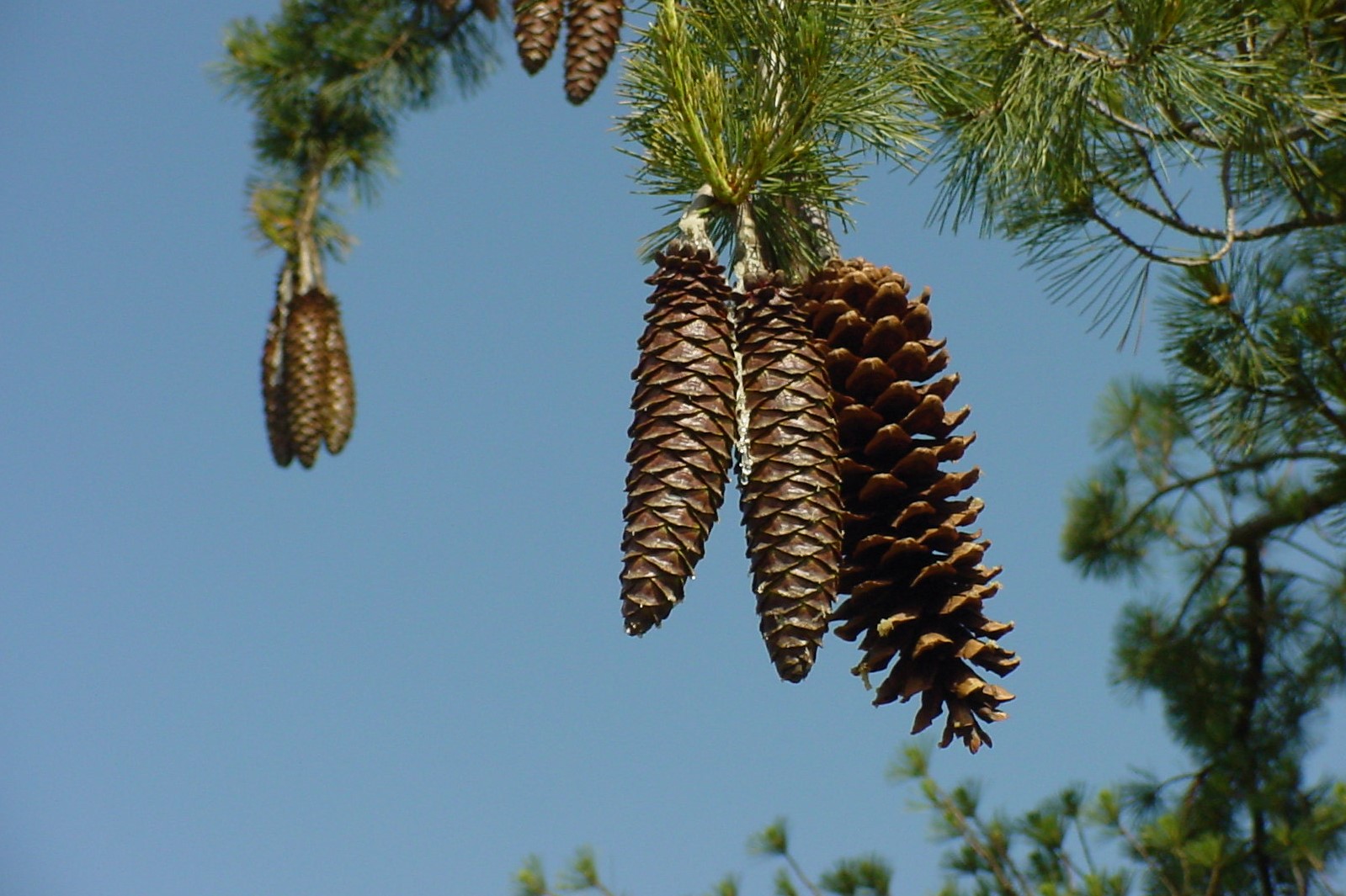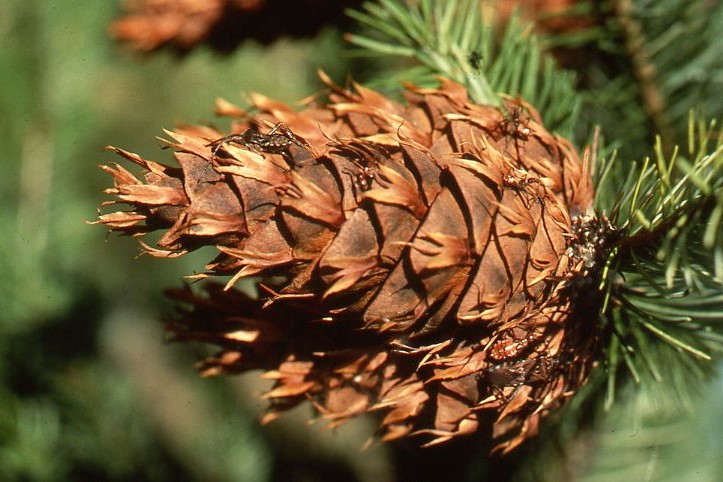When planting trees after a wildland fire or timber harvest (reforestation) or on land that did not previously have trees (afforestation), it is important to plant the right seed or seedling in the right place. The right seed or seedling will become a tree that is suited to survive, grow, and reproduce in the current and future climate. The Seedlot Selection Tool helps foresters, landowners, and land managers to consider climate change when planning reforestation and afforestation projects. This online tool maps climate variables that are important to tree growth, reproduction, and survival. Forest landowners and natural resource managers can use this tool to explore options for responding to climate change by determining where seeds or seedlings can be sourced so that they are suited to current and future climates.
The Seedlot Selection Tool matches seedlots (seedlings from a known area) and planting sites by mapping climate variables such as temperature and precipitation within a range that is suitable to the tree. The Seedlot Selection Tool has an automatic option to choose climate variables important to tree growth and survival. The tool also has options to choose climate variables and apply different constraints based on the user’s local knowledge of the planting site, plant material, management goals, climate change assumptions, and risk tolerance.
The Seedlot Selection Tool maps climate variables for the continental United States plus Alaska, Canada, and Mexico. To improve computing time, North America is viewed by sections: Alaska and western Canada, western U.S., northwest Canada, eastern U.S., southwestern U.S. and Mexico, and eastern U.S. The Seedlot Selection Tool is also available in Spanish. (Herramienta de selección de lotes de semillas está también disponible en español.)

- Choose plant materials (seeds or seedlings) that are suited for the current and future climate conditions. The Seedlot Selection Tool can help in making this decision.
- Evaluate current insect and disease issues in the reforestation area and choose plant materials that tolerate such stresses.
- Identify plant materials that are disease free and disease resistant.
- For instance, if laminated root rot occurs in a stand, then avoid susceptible trees like Douglas-fir, grand fir, Western hemlock, and mountain hemlock, and plant resistant (e.g., western redcedar, western white pine, lodgepole pine, ponderosa pine) or immune (e.g., hardwood) species.
- There are general concerns about moving inland populations or seedlots to the coast because these trees may not be resistant to insects and diseases in coastal areas.
- Identify plant materials that are disease free and disease resistant.
- Refer to species guides in soil surveys of your area. Soil surveys are a good source of information on site productivity and soil-site-species relationships.
- Consider adjusting plant density and spacing with respect to soil moisture availability in local soils.
- Change the number of seedlings planted.
- Manage stand densities of developing stands to ensure sufficient soil moisture availability.
- Consider including large openings in plantings.
- Maintain variability in species and tree architecture in some locations.
- Plant a mix of species.
- Adjust timing of planting to maximize soil moisture and precipitation to which seedlings are exposed after planting .
- For example west of the Cascades, plant in fall to reduce the effects of a summer drought following spring planting.
- Consider planting fire-tolerant tree species after fire in areas with increasing fire frequency.
- Remove competing vegetation and control ungulate browsing to allow for establishment.
Seedlot Selection Tool Guidebook for US Forest Service Pacific Northwest Region Silviculturists

Recent wildfires in the Pacific Northwest Region of the National Forest Service (Oregon and Washington) were large, consistent with historical fires, and had extensive effects, requiring reforestation across a large portion of the burned landscape. These reforestation projects use trees adapted to current and future climates to promote forest resiliency, as climate change will cause many plants to grow outside of their ideal climate. Current and future changes in climate will result in new environmental conditions and stressors, including warmer temperatures, precipitation extremes, more wildfires, competing invasive plants, and new and intensifying insect infestations. Seeding and planting are increasingly important tools because when trees match the changing climates and altered disturbances, impacts from these stressors will be reduced.
The Seedlot Selection Tool helps forest managers match planting materials with planting sites based on current and future climates. To help silviculturists and technicians use the Seedlot Selection Tool, the Northwest Climate Hub collaborated with the National Forest System - Pacific Northwest (Region 6) regional and area geneticists, the Pacific Northwest Research Station and Conservation Biology Institute to develop training materials. Land managers can use this guidebook to learn about the Seedlot Selection Tool while still working with their area geneticist to identify sources for planting materials and planting location sites. The guidebook covers six scenarios, including choosing a seedlot, choosing a planting site, comparing seedlots, and more. The guidebook walks users through each step of the tool and provides tips based on Forest Service policy and science-informed best practices. A video tutorial (in development) will guide users through the first two scenarios in the guidebook: choosing seedlots and choosing a planting site.
The step-by-step guidebook and video tutorial of the Seedlot Selection Tool are available to all users. Examples in the scenarios and user tips focus on the Pacific Northwest Region of the National Forest System, as well as national and regional Forest Service policy (as of June 2022).
-
Seedlot Selection Tool Guidebook for US Forest Service Region 6 Silviculturists

-
Seedlot Selection Tool Video Tutorial for US Forest Service Region 6 Silviculturists







